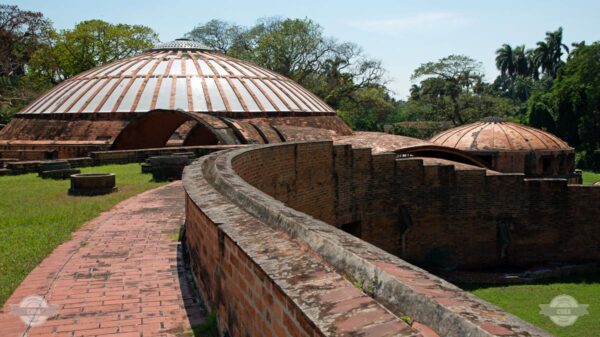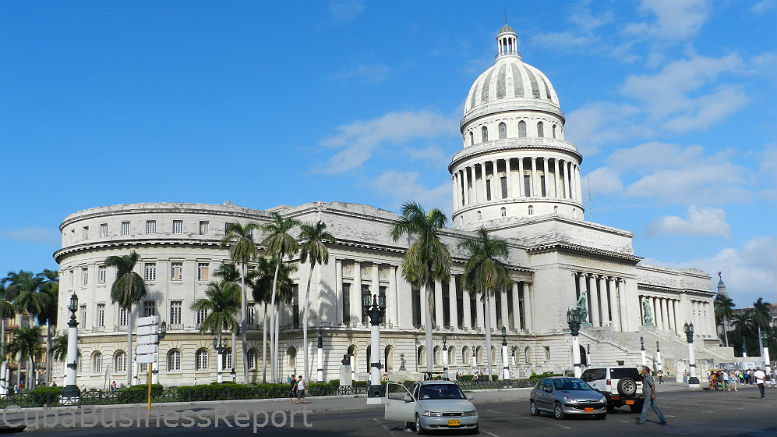Spanish Colonial, Arabic, eclectic, art deco and Soviet influences are strongly apparent in the architecture of Havana. Interestingly though, the architecture did not evolve from the indigenous population, but rather from the culture of invading nations and what they needed to achieve at a particular time in history. The Spanish invaded and later the Americans dominated politics of the right wing dictatorship of Batista and industry in Cuba.
On arrival, the outsider forces in Cuba built forts as a line of defense and, later on, residential and civic buildings in the style of the period of time in which they were constructed. Architecture was adapted to the new Cuban way of life, raw materials and climate. Wealth had masses to do with the shape and form of architecture that evolved in Havana. Cuba’s strategic position in the Caribbean was also an influence. Havana, at its high point, became one of the greatest cities in Latin America.
From the wealthy neighborhoods of by-gone times, neighborhoods were renamed to reflect the changes which occurred in Cuban society and political ideology since 1959. The Batista regime had decided to reconstruct Havana resulting in much of the city being left in disrepair. After the Cuban Revolution and the American embargo, funds for the new government were short for renovation and reconstruction projects. The city’s priorities changed. Money was needed for defense, education, and healthcare.
Colonial and Baroque Spanish Influences:
Bearing a close resemblance to much of what is Spanish architecture, the Spanish conquistadores brought with them aspects of their culture: religion, architecture and art in the construction of Havana. Spanish and Moorish (Arabic) influences are witnessed in the abundance of neoclassical arcades, interior patios and courtyards, much like the ones in places such as Granada and Seville. Spanish Baroque, Cuban Baroque can be seen in buildings such as the Cathedral of Havana (La Catedral de la Virgen María de la Concepción Inmaculada de La Habana), in the Plaza de la Catedral (1748-1777) and the Gran Teatro de la Habana Alicia Alonso (the Great Theater of Havana Alicia Alonso, Cuba’s Grand Ballerina). The Gran Teatro officially opened in 1915.

Neo-Classical, Art Deco & Eclectism:
Miramar and the boulevard of Del Prado evolved as neighborhoods of the wealthy class with urban palaces and mansions springing up to house government officials, diplomats and the wealthy business class. An almost manic obsession took over with art deco and art nouveau styles dominating the design and form of the buildings and houses of the day. An eclectic style in the architecture began in the early 20th century around these very neighborhoods. Jean-Claude Forestier moved to Havana from Paris to collaborate in the planning of the city, his aim to create “a harmonic balance between the classical built form and the tropical landscape. ” (Wikipedia)
An almost replica of the capital building of Washington, D.C. was designed and constructed in Havana. The Capitolio Building (c. 1929) is a wonderful example of Neo-Classical with some eclectic elements in this booming city of early 20th century Havana. The Hotel Nacional de Cuba on the Malecón is also ecletic in style, designed with a fusion of Arabic, art deco, Spanish-Moorish, Neo-Colonialism elements. Los Jardines de la Tropical, (the beer garden) is another fine example of Art Nouveau, Art Deco and Moorish influences in its structure and design.
Cuban Modernism:
Hotels and high rises began to change the skyline of Havana in the 1950s. The mid-20th century Cuban modernist architecture took hold in Havana. After 1965, Cuban modernism became a collision course between the ideals of Latin America of the South and Soviet functionalist ideology, resulting in what could be the biggest architectural faux pas of the Castro years. This mistake was to crush the dream shared by both Fidel Castro and Che Guevara, to build the world’s finest art school (Escuelas Nacionals de Arte) just outside of Havana. Of the five buildings, only two were completed but this architectural wonder, ironically now, stands as one of the greatest achievements in Latin American architecture.

From our staff writers and editors.









